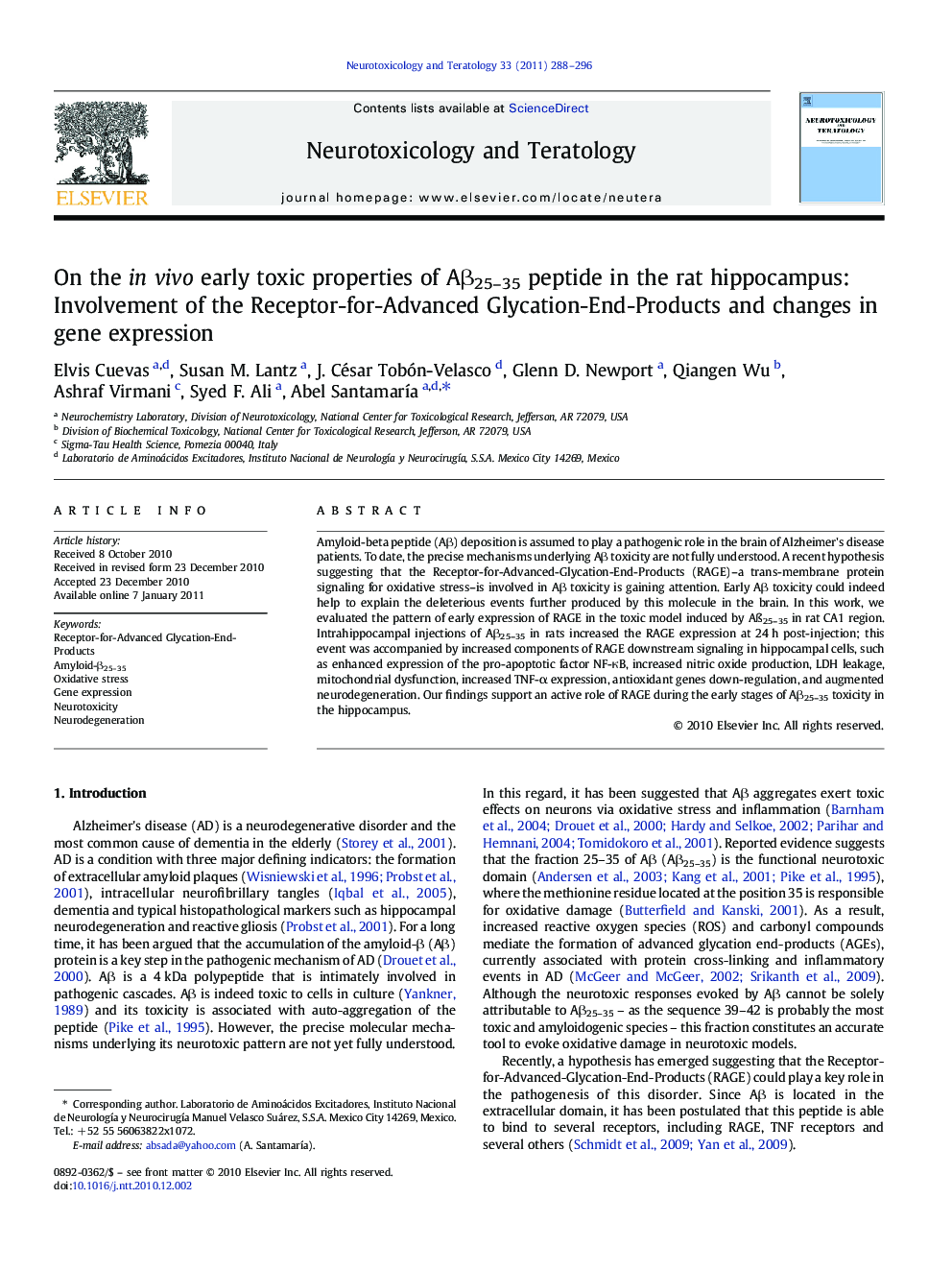| Article ID | Journal | Published Year | Pages | File Type |
|---|---|---|---|---|
| 2591634 | Neurotoxicology and Teratology | 2011 | 9 Pages |
Amyloid-beta peptide (Aβ) deposition is assumed to play a pathogenic role in the brain of Alzheimer's disease patients. To date, the precise mechanisms underlying Aβ toxicity are not fully understood. A recent hypothesis suggesting that the Receptor-for-Advanced-Glycation-End-Products (RAGE)–a trans-membrane protein signaling for oxidative stress–is involved in Aβ toxicity is gaining attention. Early Aβ toxicity could indeed help to explain the deleterious events further produced by this molecule in the brain. In this work, we evaluated the pattern of early expression of RAGE in the toxic model induced by Aß25–35 in rat CA1 region. Intrahippocampal injections of Aβ25–35 in rats increased the RAGE expression at 24 h post-injection; this event was accompanied by increased components of RAGE downstream signaling in hippocampal cells, such as enhanced expression of the pro-apoptotic factor NF-κB, increased nitric oxide production, LDH leakage, mitochondrial dysfunction, increased TNF-α expression, antioxidant genes down-regulation, and augmented neurodegeneration. Our findings support an active role of RAGE during the early stages of Aβ25–35 toxicity in the hippocampus.
